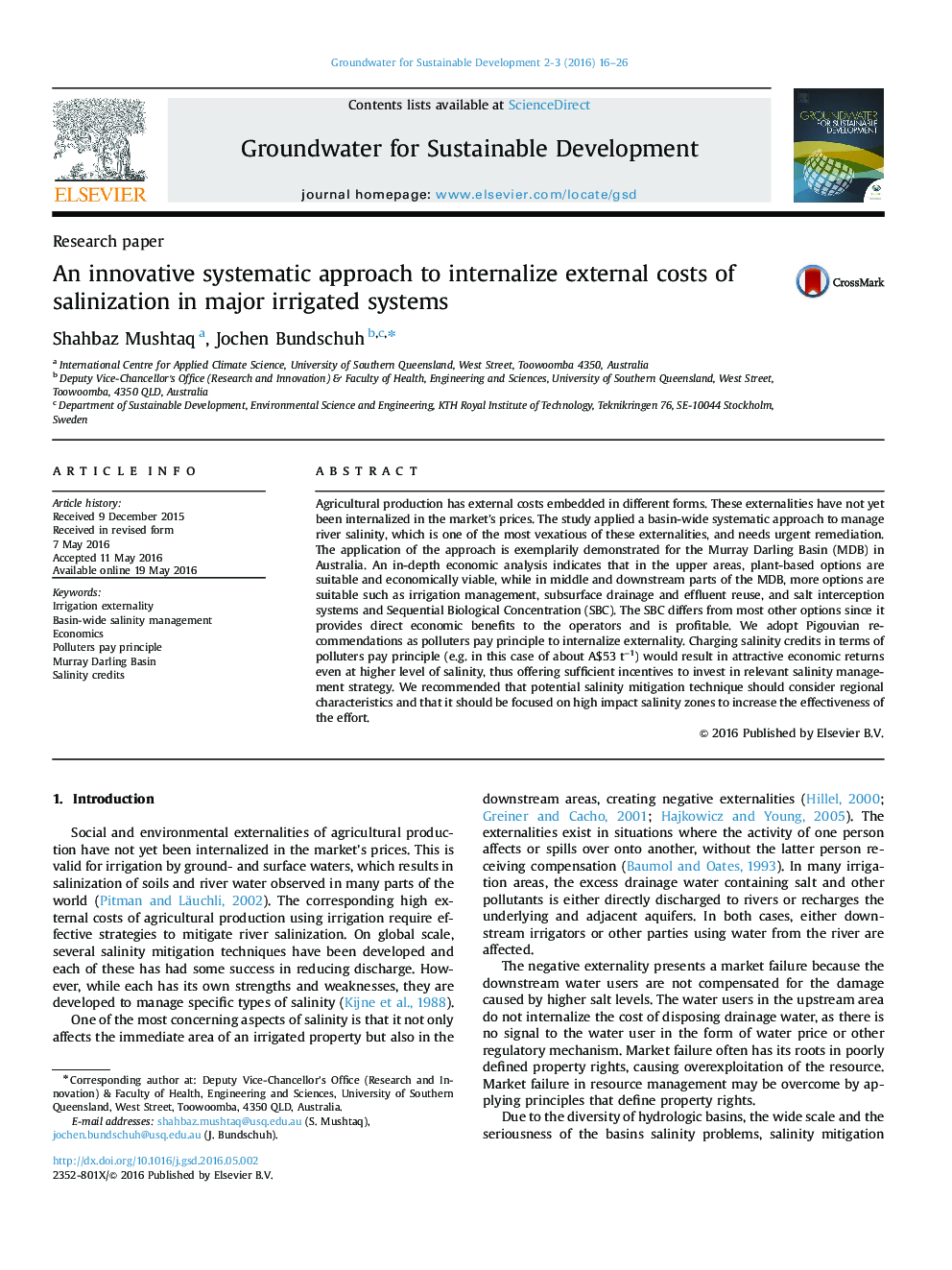| Article ID | Journal | Published Year | Pages | File Type |
|---|---|---|---|---|
| 4476254 | Groundwater for Sustainable Development | 2016 | 11 Pages |
•Agricultural production externalities in form of salinity threats sustainability.•Application of basin-wide systematic salinity management strategy.•Internalization of third party salinity impact through salinity credits.•Plant-based option is economically viable to manage dryland salinity.•Serial Biological Concentration is financially viable option for irrigated areas.
Agricultural production has external costs embedded in different forms. These externalities have not yet been internalized in the market's prices. The study applied a basin-wide systematic approach to manage river salinity, which is one of the most vexatious of these externalities, and needs urgent remediation. The application of the approach is exemplarily demonstrated for the Murray Darling Basin (MDB) in Australia. An in-depth economic analysis indicates that in the upper areas, plant-based options are suitable and economically viable, while in middle and downstream parts of the MDB, more options are suitable such as irrigation management, subsurface drainage and effluent reuse, and salt interception systems and Sequential Biological Concentration (SBC). The SBC differs from most other options since it provides direct economic benefits to the operators and is profitable. We adopt Pigouvian recommendations as polluters pay principle to internalize externality. Charging salinity credits in terms of polluters pay principle (e.g. in this case of about A$53 t–1) would result in attractive economic returns even at higher level of salinity, thus offering sufficient incentives to invest in relevant salinity management strategy. We recommended that potential salinity mitigation technique should consider regional characteristics and that it should be focused on high impact salinity zones to increase the effectiveness of the effort.
Graphical abstractFigure optionsDownload full-size imageDownload as PowerPoint slide
